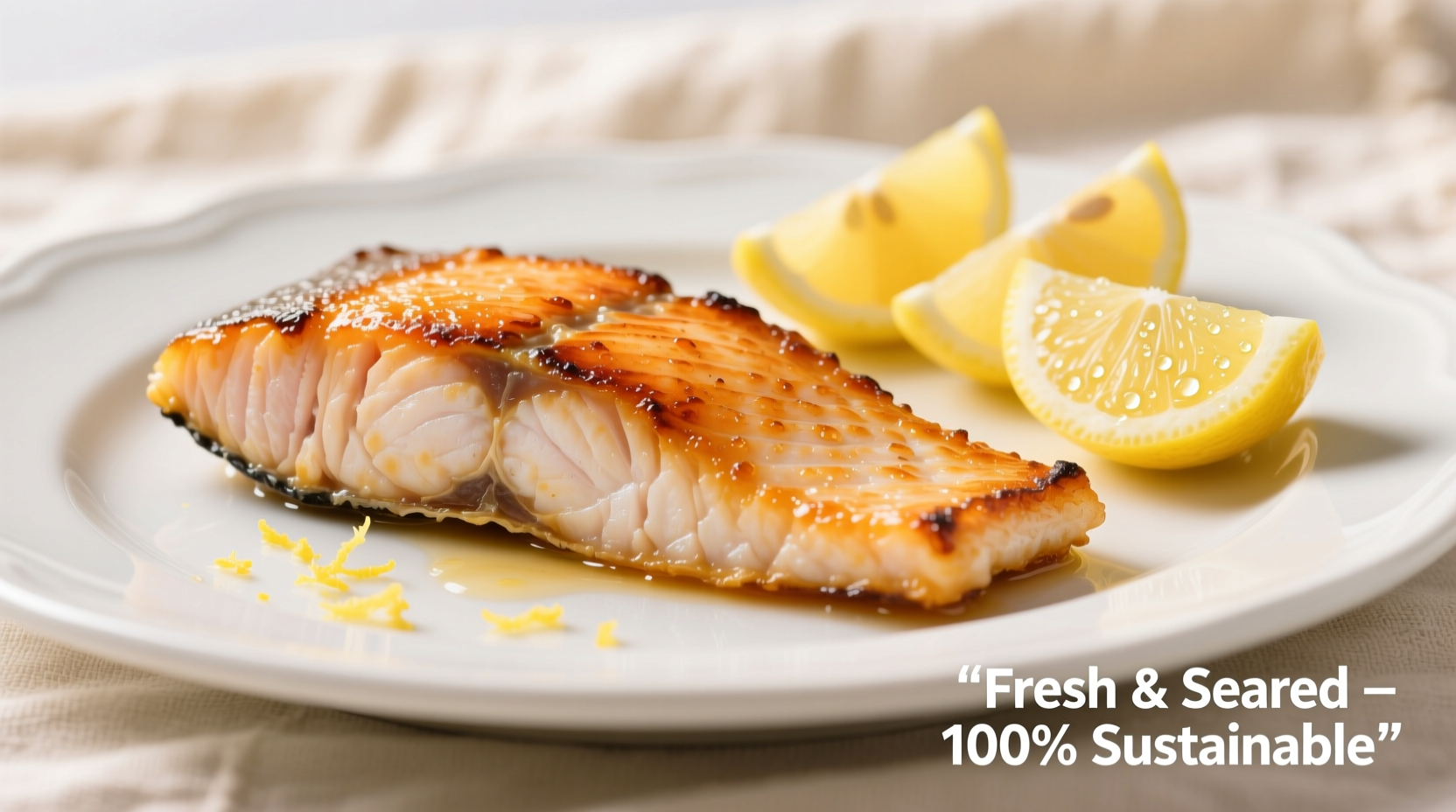Orange roughy's mild flavor and flaky texture make it a versatile canvas for culinary creativity, but its delicate nature demands precise cooking techniques. As a deep-sea fish with unique characteristics, understanding its proper preparation transforms this often-misunderstood seafood into a restaurant-quality meal in your home kitchen.
Essential Preparation Before Cooking
Before heating your pan or oven, proper preparation ensures optimal results. Start by examining your orange roughy fillets for any remaining bones using tweezers or needle-nose pliers. Pat the fish thoroughly dry with paper towels—a critical step many home cooks overlook that prevents steaming instead of searing. For best flavor development, season with salt 15 minutes before cooking to allow proper penetration without drawing out moisture.
Thaw frozen orange roughy properly by transferring it to the refrigerator 24 hours before cooking. Never thaw at room temperature, which creates food safety risks and damages the delicate flesh structure. If you're short on time, place the sealed package in cold water for 30-45 minutes, changing the water every 10 minutes.
Four Reliable Cooking Methods Compared
| Cooking Method | Temperature | Time Per Inch | Visual Doneness Cues |
|---|---|---|---|
| Pan-searing | Medium-high (375°F) | 3-4 minutes per side | Golden crust, flakes separate easily |
| Baking | 400°F | 8-10 minutes | Opaque throughout, slight resistance when pressed |
| Grilling | Medium (350-400°F) | 4-5 minutes per side | Char marks, lifts easily from grates |
| Broiling | High | 5-6 minutes | Top is golden, edges curl slightly |
Pan-Seared Orange Roughy: Step-by-Step
This restaurant-favorite method delivers perfect results when executed correctly. Heat 1 tablespoon of high-smoke point oil (avocado or grapeseed) in a heavy skillet until shimmering but not smoking. Place fillets skin-side down if applicable, pressing gently for 10 seconds to ensure contact. Cook undisturbed for 3-4 minutes until a golden crust forms. Flip carefully using a thin spatula and cook 2-3 minutes more until the internal temperature reaches 145°F. For enhanced flavor, add a tablespoon of butter, lemon slices, and fresh herbs during the final minute of cooking, basting the fish continuously.
Baking Orange Roughy: Foolproof Technique
Preheat your oven to 400°F with rack positioned in the center. Line a baking sheet with parchment paper and arrange seasoned fillets in a single layer. For moist results, create a flavorful bed of lemon slices, cherry tomatoes, and olives beneath the fish. Bake for 8-10 minutes—timing varies based on thickness. The fish is done when it turns opaque and flakes easily with a fork but still appears moist. Overcooking is the most common mistake with baked orange roughy; check at the 7-minute mark to prevent dryness.
Flavor Pairings That Elevate Orange Roughy
Orange roughy's subtle flavor shines with complementary ingredients that enhance rather than overwhelm. Citrus elements like lemon, lime, and orange work exceptionally well, as do fresh herbs including dill, parsley, and tarragon. Create simple pan sauces by deglazing your cooking vessel with white wine or fish stock after removing the fish, then whisking in cold butter for richness.
For a Mediterranean twist, top cooked orange roughy with a fresh salsa of diced cucumber, red onion, Kalamata olives, and capers. Asian-inspired preparations benefit from ginger, garlic, and a light soy-ginger broth for poaching. Remember that less is more with this delicate fish—complex spice blends often overpower its natural flavor.

Sustainability Considerations and Responsible Choices
Understanding orange roughy's conservation status is essential for conscientious cooking. According to NOAA Fisheries data, certain orange roughy populations experienced severe depletion due to historical overfishing. While some stocks have shown recovery through strict management, others remain vulnerable. The Monterey Bay Aquarium Seafood Watch program currently lists New Zealand orange roughy as "Good Alternative" but advises avoiding Pacific stocks from certain regions.
When purchasing orange roughy, look for Marine Stewardship Council (MSC) certification or ask your fishmonger about the specific origin. Consider these sustainable alternatives with similar cooking properties: sablefish (when MSC-certified), Pacific halibut, or Arctic char. These options provide comparable texture and flavor profiles while supporting healthier ocean ecosystems.
Mercury Content and Consumption Guidelines
The FDA classifies orange roughy in the "choose less often" category due to moderate mercury levels. This recommendation stems from the fish's long lifespan (up to 150 years) and position in the food chain. For most adults, consuming orange roughy once every two weeks fits within safe mercury exposure limits. Pregnant women, nursing mothers, and young children should limit consumption to one serving per month or choose lower-mercury alternatives like salmon or cod.
Storage and Leftover Tips
Store raw orange roughy in the coldest part of your refrigerator on a bed of ice, using within 1-2 days of purchase. Cooked orange roughy maintains quality for up to two days when stored in an airtight container. When reheating, use gentle methods like a 275°F oven for 8-10 minutes or a microwave at 50% power to prevent overcooking. Leftover orange roughy works beautifully in fish salads, tacos, or mixed into pasta dishes with a light lemon cream sauce.











 浙公网安备
33010002000092号
浙公网安备
33010002000092号 浙B2-20120091-4
浙B2-20120091-4